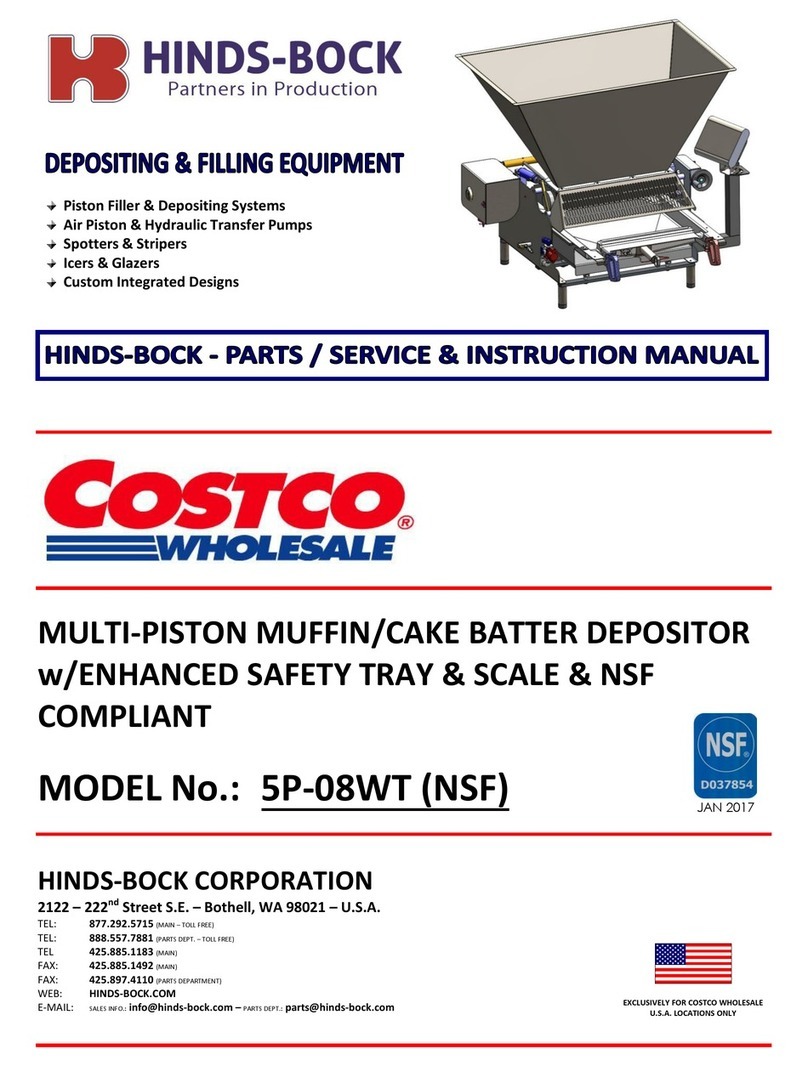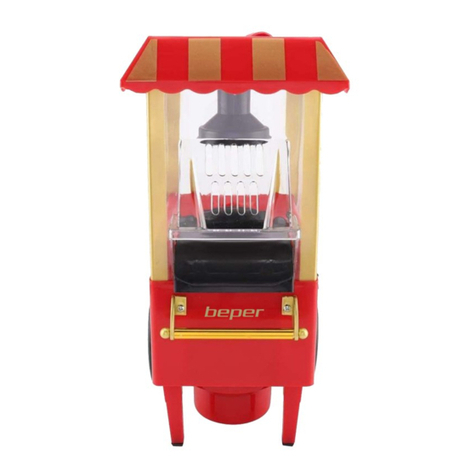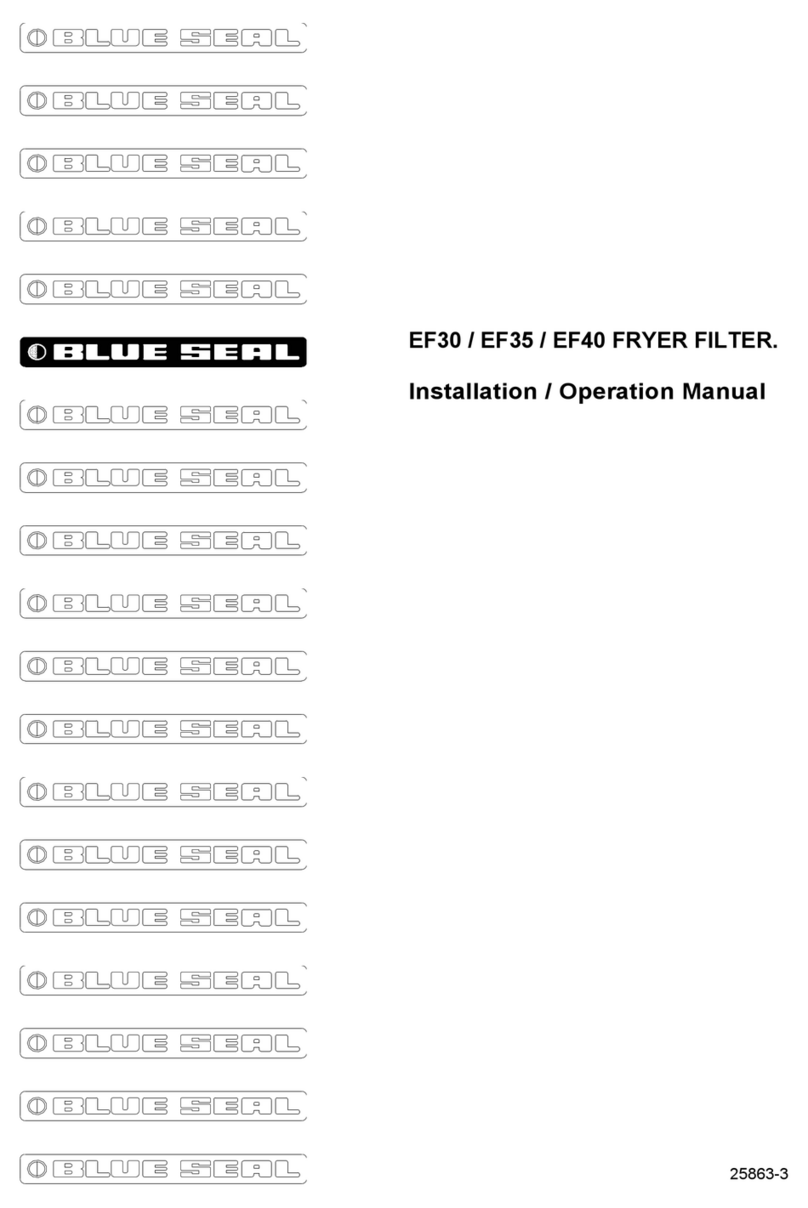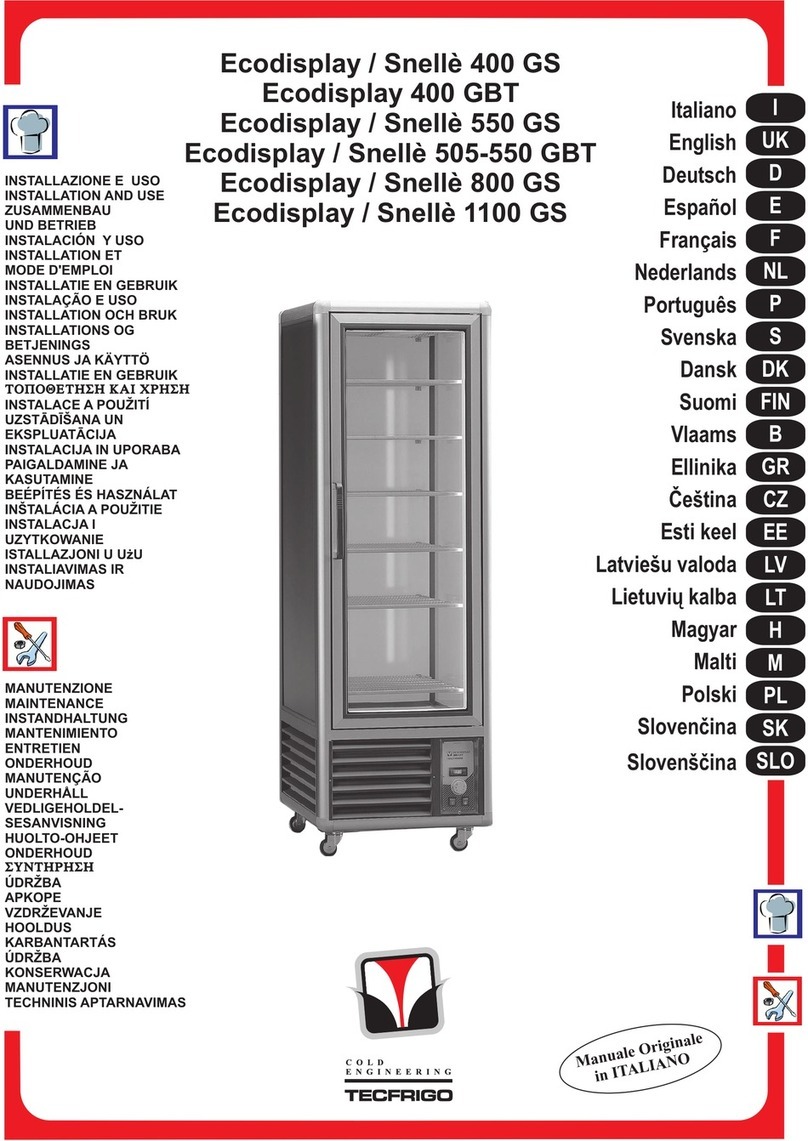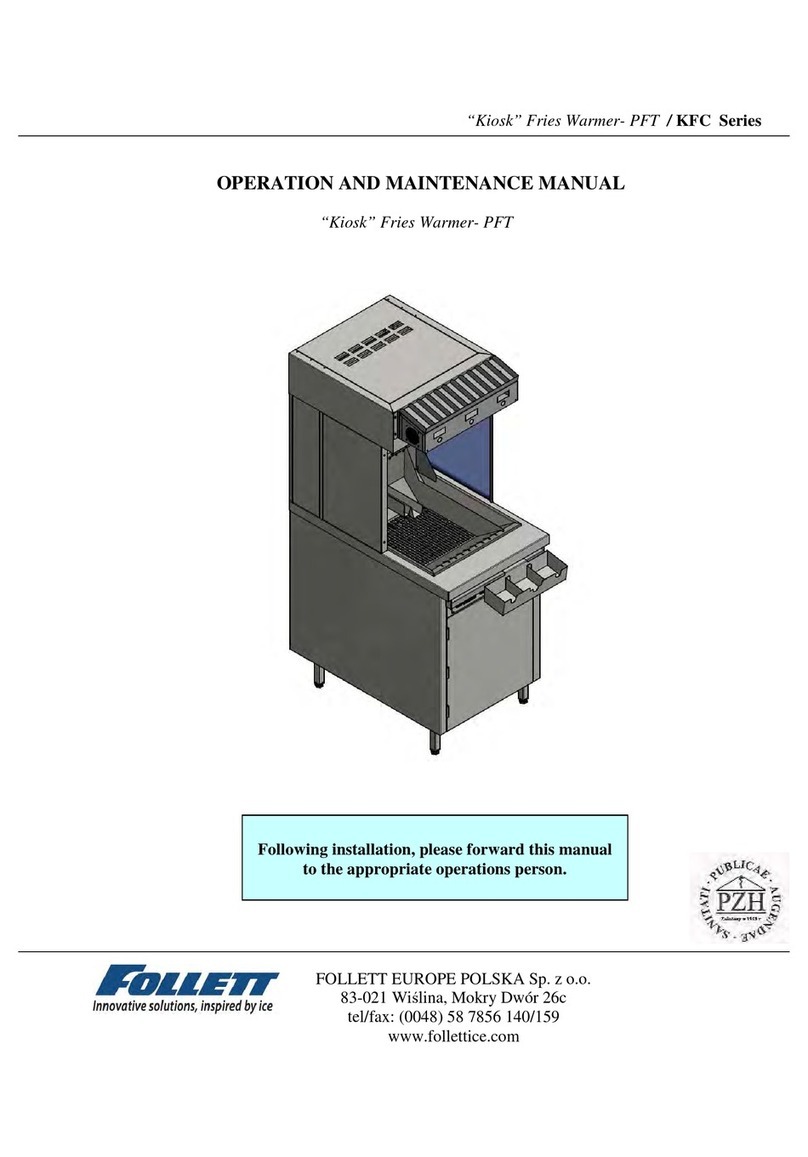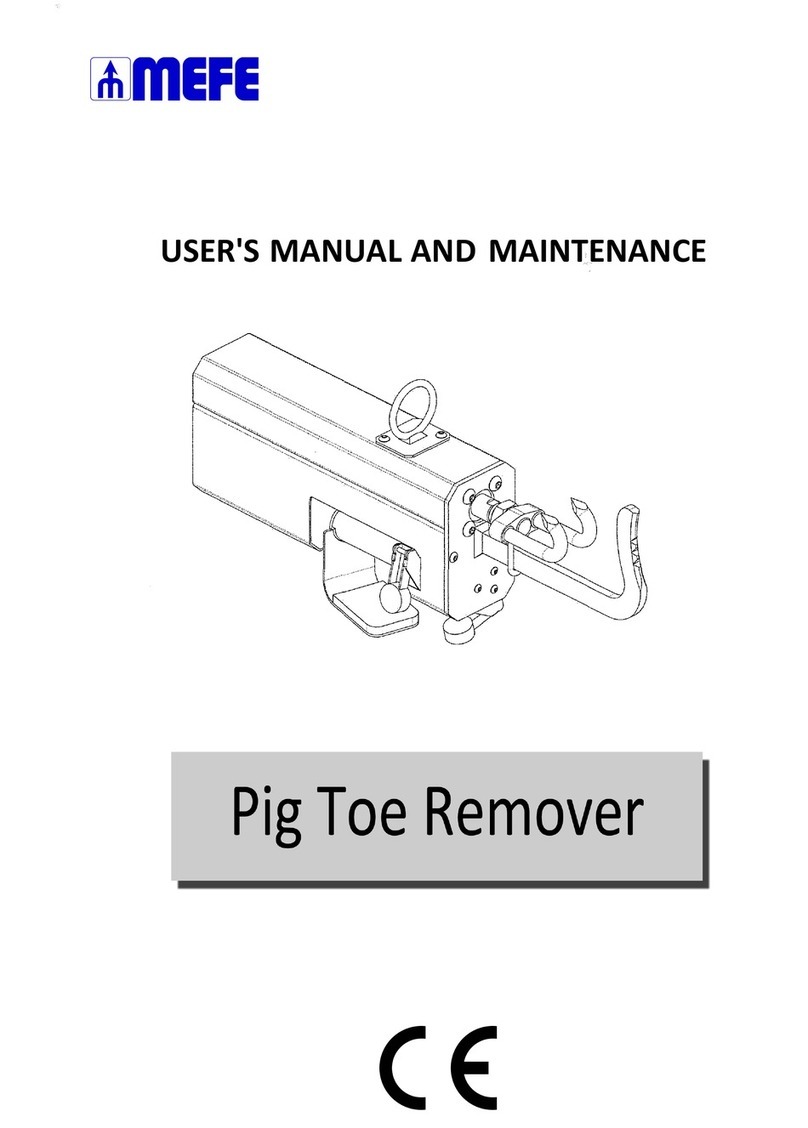Slayer Espresso V3 User manual

SLAYER ESPRESSO V3 USER GUIDE V4.1 | SEPTEMBER 5, 2019
Espresso V3
USER MANUAL
VERSION 4.1
SEPTEMBER 2019

2
1
2
3
4
5
6
7
8
9
10
11
13
14
15
16
17
26
27
29
30
32
34
35
CLEANING & PREVENTATIVE MAINTENANCE
Daily
Every 1-2 Months
Every 6 Months
Every 12-18 Months
Wood Care
PARTS DIAGRAMS
TABLE OF CONTENTS
Slayer Espresso V3
Table of Contents
Copyright Information
Resources
Warranty Information
Safety Advisor
Water Treatment Requirements Recommended
Tools & Accessories Installation
PREPATION AND SETUP
Step 1: Prepare Site
Step 2: Unpack Equipment
Steps 3 & 4
Steps 5,6, & 7
Step 8: Turn on Heating Elements
I'M READY, LET'S BREW THIS!
Factory Settings
Using Slayer

3
COPYRIGHT INFORMATION
Copyright © 2018, 2016 by Seattle Espresso Machine Corporation
All rights reserved. No part of this publication may be reproduced,
distributed, or transmitted in any form or by any means without the prior
written permission of the publisher, except in the case of noncommercial
uses permitted by copyright law. For permission requests, contact the
publisher.
Seattle Espresso Machine Corporation
6133 6th Avenue South
Seattle, Washington, USA 98108
SLAYERESPRESSO.COM
TERMS & CONDITIONS
Slayer makes no representations or warranties with respect to the
contents of this publication. Information contained herein is subject to
change without notice. Every precaution has been taken in the preparation
of this manual; nevertheless, Slayer assumes no responsibility for errors or
omissions or any damages resulting from the use of this information.
Read this manual completely before installing and operating your Slayer
espresso machine. Incorrect installation and operation may result in
damage to the equipment, personal injury, or even death. Disregarding
the instructions contained herein indemnifies Slayer from all resulting
damages and may void the equipment warranty.
For additional safety precautions, see the safety advisory on page 7.
SLAYER ESPRESSO V3 USER GUIDE V4.1 | SEPTEMBER 5, 2019

4
TECHNICAL SUPPORT & PARTS
support@slayerespresso.com
+1 (206) 284-7171 EXT. 3
ORDERS SUPPORT & COMMUNICATIONS
orders@slayerespresso.com
+1 (206) 284-7171 EXT. 2
SHIPPING
shipping@slayerespresso.com
+1 (206) 284-7171 EXT. 4
STOP
RESOURCES
For quick installation, see the QUICK START GUIDE that was included
with your machine upon delivery located in the clear packing envelope.
For additional details or installation assistance, contact your authorized
Slayer reseller or the appropriate party listed below:
NOTE FROM OUR CUSTOMER SUCCESS DIRECTOR, SARAH
DOOLEY:
IMPORTANT! TO OPEN YOUR CRATE please take thirty short seconds
of your life to watch our uncrating video in the link below or follow the
steps in the one page illustration attached to the machine. Grab your drill,
as you are eight screws away from unlocking this beauty. RESIST the
desire to take a crowbar to the top of the crate and give us a little more
credit friends, we’d never make it that hard to open the box.
SALES
+1 (206) 284-7171 EXT. 2
MARKETING
+1 (206) 284-7171 EXT. 6
TRAINING & EDUCATION
+1 (206) 284-7171 EXT. 5006
SLAYER ESPRESSO V3 USER GUIDE V4.1 | SEPTEMBER 5, 2019

5
will include any instances in which, following the occurrence of a defect,
you fail to immediately take all suitable measures to limit damage to the
equipment and/or fail to provide Slayer with an opportunity to remedy the
defect.
Slayer’s sole responsibility and liability under the warranty set forth herein
is limited to, in Slayer’s sole discretion, repair or replacement of defective
parts. Unless otherwise specified in writing, this excludes labor, shipping,
and any other costs.
To the fullest extent permitted by applicable Washington State (USA)
laws, Slayer’s warranty set forth herein is limited to the original purchaser
of the equipment. Slayer does not, directly or indirectly, oer any warranty
to any other person, unless otherwise agreed in writing.
Except as expressly provided herein, all goods are provided to you as
they are. Slayer disclaims all representations and warranties, whether
expressed or implied, including warranties of title, non-infringement,
merchantability, and fitness for a particular purpose.
Warranty claims must be authorized by a Slayer Support representative
prior to repair or remedial action.
WARRANTY INFORMATION
Slayer provides a 15-month (fifteen month) warranty on all equipment and
parts, beginning at the date of shipment from the Seattle headquarters. All
equipment and parts are warranted to be free from defect in material or
workmanship. Unless otherwise specified in writing, this warranty covers
materials only (e.g. equipment, parts) and excludes labor, shipping, and
any other costs.
This warranty does not cover accidental damage to equipment, abuse of
equipment, or improper use of equipment. “Improper use” includes, but is
not limited to, the operation of a machine with inadequately treated water
and/or the operation of a machine with inadequate water supply. Any
and all damage resulting from inadequate water treatment is expressly
excluded from the coverage of this warranty. Read “Water Treatment
Requirements” on pg. 8 for information about water-related issues.
Damage resulting from improper installation of equipment is expressly
excluded from this warranty.
Warranty coverage does not include parts that are subject to normal wear
and tear, as determined by Slayer. These include, but are not limited to,
shower screens, portafilter gaskets, expansion or anti-suction valves, and
Preventative Maintenance parts. Warranty coverage excludes glass or
plastic parts.
This warranty will immediately expire if you or a third party performs
faulty maintenance, excessive use, or neglect of necessary service. This
SLAYER ESPRESSO V3 USER GUIDE V4.1 | SEPTEMBER 5, 2019

6
SAFETY ADVISORY
This guide includes important instructions about safe espresso machine
installation, operation, and maintenance. Read this manual completely
before installing and operating your Slayer espresso machine. Incorrect
installation and operation may result in damage to the equipment,
personal injury, or even death. Disregarding the instructions contained
herein indemnifies Slayer from all resulting damages and may void the
machine’s warranty.
Shipping is coordinated by the customer and performed by a third party.
Slayer is not responsible for damage incurred during transport. Upon
receiving your machine, carefully inspect all packaging, equipment,
and accessories for visible damage. Photograph any visible damage to the
crate or espresso machine and immediately contact your shipping
company representative within seven days of receipt. Comply with
shipping company regulations. Do not connect your machine to power,
water, or drainage until all issues have been resolved or your Slayer
representative or reseller instructs you to do so. Failure to resolve issues
before using equipment may result in further damage or injury.
Installation should be performed by qualified personnel only and must
comply with all regulations and requirements of the authorities in your
area. If guidance is needed to safely install your machine, contact your
Slayer representative or reseller.
It is critical that an appropriately-rated and grounded electrical plug is
used to supply your machine with power. This is essential for the safe
operation and use of the equipment. Contact your Slayer representative
or reseller with questions about this requirement. If you are unsure about
the safety of the electrical configuration, do not attempt to install your
machine.
Your Slayer espresso machine should only be used for the functions it was
designed to perform. Using your machine outside of its defined
functionality – as it is described in the “Using Slayer” section on pg. 17 of
this guide – may be a safety hazard, resulting in property damage,
physical injury, or even death, and will immediately void the warranty.
Slayer espresso machines are electrical appliances that should be used in
a safe manner appropriate to devices of their kind:
•Do not connect your Slayer espresso machine to electrical power
through an extension cord. The machine must be directly
connected to an appropriately - rated and grounded power source.
•Do not position the power cord in walkways or other high-traffic
areas.
•Slayer espresso machines are designed to be used indoors. When
using your machine outdoors, take precautionary measures to protect
it from moisture, humidity, and other natural elements.
•Before performing service on your machine, disconnect the
power source and turn off the water feed.
•Prior to installation, make sure there is a circuit breaker installed with
a distance between the contacts that allows for complete
disconnection when there is a category III overload and that provides
protection against current leakage equal to 30 mA. The circuit
breaker must be installed on the power-supply in compliance with
installation rules. If the power-supply is not working properly, the
appliance can cause transitory voltage drops. The electrical safety of
this appliance is only ensured when it is correctly connected to an
efficient earthing system in compliance with the electrical safety laws
in force. This fundamental safety requirement must be verifed. If in
doubt, request that a qualified electrician inspect the system. The
manufacturer cannot be held responsible for any damage caused by
the lack of an earthing system on the electrical supply.
Please also observe the following rules for installation and operation:
•Room temperature must range between 10° and 32°C (50°F and 90°
F)
•Do not install in rooms (kitchens) that are cleaned with jets of water
or attempt to clean the machine with jets of water
•When to water mains, only use the supplied parts for installation. If
other parts are installed, they must be new (unused pipes and
gaskets for the water connection) and they must be permitted for
contact with water suitable for human consumption (according to
local laws in force)
•The mains water pressure connection should be between a minimum
of 300 kPa (3 bar) and a maximum of 500 kPa (5 bar)
SLAYER ESPRESSO V3 USER GUIDE V4.1 | SEPTEMBER 5, 2019

7
WATER TREATMENT REQUIREMENTS
bacteria.
Reverse Osmosis with a Blend-Back Valve (or Remineralized RO): a
process by which water is forced through a semipermeable membrane
with selective pore sizes at high pressure, then blended with the
appropriate amount of desired minerals. Reverse osmosis may be a good
solution for water in the range of 6-9 grains of hardness and is mandatory
for water above 9 grains. When blending minerals with the filtered water,
target a TDS (total dissolved solids) value of of 75-125 ppm. Experiment
with various TDS levels to determine what produces your preferred taste.
All Slayer espresso machines need to be connected to a carbon water
filter to remove chlorine, sediments, odor, and undesirable tastes. This
requirement is in addition to any other necessary water filtration systems.
Filtration requirements may vary seasonally. Water should be tested
during each season to determine the best filtration plan. Once a filtration
method has been selected, take note of the filter’s peak capabilities.
Replacement of filtration is based on volume and varying levels of
hardness. Contact the filtration provider or vendor to inquire about the
life expectancy of the filters, then schedule replacement and installation
accordingly.
IMPORTANT: Damage to or failure of your amchine due to inadequately
treaed waster is not covered under warranty. Every time a new water
filter is installed, thoroughly rinse the filter before attaching it to your
machine or pump. Run water from the supply line through the filter
and down a drain for at least 2 minutes, fully washing the filter and the
residue or loose fibers in the filter cartridge. Skipping this step will cause
damage to your machine.
Improper water treatment is the most frequent cause of espresso machine
damage. Water is complex and varies significantly between regions, so
take great care to test the water quality at your location and adjust as
necessary. Employ professional help to evaluate your water and administer
treatments.
When evaluating water quality, the two most important factors to
consider are calcium carbonate and chloride:
Calcium Carbonate: a dissolved mineral that determines the “hardness”
or “softness” of water. The desirable range of hardness is 4-5 grains.
Over time, calcium carbonate accumulates as a hard substance, called
“scale”, and will inhibit the flow of water. Machines subjected to “harder”
water (greater than 5 grains) will accumulate scale faster and require
maintenance earlier.
Chloride: chlorine combined with an electron from a negatively charged
ion. There are many types of chlorides, including calcium chloride,
magnesium chloride, sodium chloride, etc. Chlorides produce salts that
impart a strong taste, which alters the flavor of the espresso. Chlorides
also encourage pitting corrosion, which causes damage to the machine.
incoming water should have no more than 30ppm chloride content.
Your water filtration company will create a treatment plan based on
your water needs. Choose a filtration company that has solutions for
addressing issues related to both calcium carbonate and chloride.
Common treatment options include Carbon Filtration, Ion Exchange, and
Reverse Osmosis:
Carbon Filtration: a process by which water passes through the granular
activated carbon, which attracts and retains many chemicals in the water
that have an unpleasant color, taste or odor. Carbon filtration is necessary
for all machines. For water with 4-5 grains of hardness, carbon filtration is
likely the only necessary water treatment.
Ion Exchange: a process by which water passes through an ion exchange
system, where undesirable mineral components are retained and more
desirable substances such as sodium are released. An ion exchange
system should be used in combination with a carbon filtration system and
is especially beneficial for water in the range of 6-9 grains of hardness.
This system is relatively inexpensive and eective in removing inorganic
substances. It does not, however, remove organic substances, such as
SLAYER ESPRESSO V3 USER GUIDE V4.1 | SEPTEMBER 5, 2019

8
RECOMMENDED TOOLS & ACCESSORIES
BEVERAGE PREPARATION
• Espresso grinder
• Scale (must measure in 0.1-gram increments)
• Tamper (must have a 58-58.4 millimeter base diameter)
• Shot glasses
• Steaming pitcher
• Soft towels
EQUIPMENT CARE & MAINTENANCE
• Allen keys (Metric and SAE)
• Crescent wrench
• Flat-head screwdriver
• Group head brush
• Needle-nose pliers
• #2 Phillips-head screwdriver
• Pick or awl
• Pliers
• 9/16 inch socket wrench
• Adjustable wrench
• Slayer Espresso Machine Cleaner
• Steam wand cleaner
• Non-abrasive surface cleaner
• Slayer Lubricant
• Teflon tape
SLAYER ESPRESSO V3 USER GUIDE V4.1 | SEPTEMBER 5, 2019

INSTALLATION
Only qualified service personnel should install Slayer espresso machines.
For a list of certified Slayer technicians near you please contact our
support department. Incorrect installation may result in injury and/or
damage to the equipment. Please read the “Safety Advisory” on pg. 7
before beginning installation.
Install your Slayer espresso machine with the following ordered steps:
10
11
13
13
13
Step 1: Prepare Site
Step 2: Unpack Equipment
Step 3: Connect Plumbing
Step 4A: Connect Water Line (No Hot Water)
Step 4B: Connect Water Line (Hot Water)
Step 4C: Adjust Hot Water Temperature
Step 5: Connect Pump
Step 6: Connect Machine to Power
Step 7: Fill Tanks
Step 8: Turn on Heating Elements
14
9
SLAYER ESPRESSO V3 USER GUIDE V4.1 | SEPTEMBER 5, 2019
13
14
14
15

10
SLAYER ESPRESSO V3 USER GUIDE V4.1 | SEPTEMBER 5, 2019
3 Group
STEP 1: PREPARE SITE
Your installation site will need direct access to power, water, and drainage. Building regulations vary by region, so confirm local
requirements prior to connecting your machine.
Using quality, treated water is essential to achieving the best possible results when preparing coffee and may also extend the life of
your machine. Read the Water T reatment Advisory on pages 6-7 for information about avoiding and addressing water-related issues.
Your Slayer espresso machine weighs approximately 160 kg (350 lb.) when filled with water and needs to be installed on a structure that
is capable of supporting its weight.
Use the following diagram to locate and drill holes in the counter for the water and drain lines. Note that electrical plugs vary in size and
a larger hole may be required to accommodate the main power
cord.
2 Group

STEP 2: UNPACK EQUIPMENT
Your Slayer espresso machine will arrive in a lidded wooden
crate, bolted to a pallet at the base. Unpack with the following
steps.
PARTS & TOOLS
•Phillips-head screwdriver
•Two (2) Rubber feet (included)
•Steam handles (included)
•Drip tray mirror (included)
•Three (3) nuts for drip tray mirror (included)
PROCEDURE
1. Use a phillips-head screwdriver to loosen and remove the
screws (approximately eight [8] screws) located along the
lower edge of the crate.
2. Carefully lift the lid from the pallet.
3. Remove all banding and packing material from the machine.
4. Use a phillips-head screwdriver to loosen and remove the
screws (approximately two [2] screws) from the base of the
pump, then detach it from the pallet.
5. The machine is attached to the pallet with two (2) bolts that
are screwed into two (2) of its four (4) legs, one on each side
of the machine. Use a socket wrench to loosen and remove
the two (2) bolts from the underside of the pallet.
11
LIFT HERE
SLAYER ESPRESSO V3 USER GUIDE V4.1 | SEPTEMBER 5, 2019
6. Attach the included rubber feet to the bottom of
the two (2) legs that were bolted to the pallet.
7. Prepare surface by laying out one or more towels,
which will rest under the machine's feet and allow
for easy sliding into desired position.
8. Holding the machine by the lower part of the X's
as shown, employ (2) or more people to lift the
machine up and onto the towels on the prepared
surface.
9. Slide machine into desired position, then left legs,
one or two at a time, to remove towel(s).
10.Attach the steam handles by threading into place.
11. Attach the drip tray mirror using the three (3)
included nuts.
12. Pull both steam actuators forward, into the “on”
positions. Leave steam actuators in the “on”
positions until “Step 8: Turn on Heating Elements”.

STEP 3: CONNECT DRAIN HOSE
PARTS & TOOLS:
•Drain hose (included)
•Hose clamp (included)
•Flat-head screwdriver
PROCEDURE:
1. Use the hose clamp to fasten
the drain hose to the drain
outlet, as shown.
‣The drain hose has an inside
diameter of 5/8" (1.6cm).
2. Prevent clogging by ensuring
that the drain line always goes
downwards.
‣Leave steam actuators in the “on” positions for
“Step 8: Turn on Heating Elements”.
STEP 4A: CONNECT WATER LINE
For machines without hot water
IMPORTANT:
Before connecting a water treatment system to your
espresso machine, rinse the system by running water through it for at
least two (2) minutes. Failure to follow this step will result in
equipment damage. Read the Water T reatment Requirements on
pages 6-7 for
information about avoiding and addressing water-related issues.
PARTS & TOOLS:
•40”x3/8” braided stainless steel hose
•60”x3/8” braided stainless steel hose (with 90-degree fitting)
•Wrench
PROCEDURE:
1. Use the shorter, 40”x3/8” braided
hose to connect the water treatment
system outlet to the pump inlet.
2. Use the longer, 60”x3/8” hose to connect the pump
outlet to the espresso machine water inlet
(located at the bottom-rear of the machine).
‣The end with the 90-
degree fitting should
connect to the espresso machine.
‣Leave steam actuators in the “on” positions for “Step
8: Turn on Heating Elements”.
12
OUTLET TO
INLET FROM
SLAYER ESPRESSO V3 USER GUIDE V4.1 | SEPTEMBER 5, 2019

STEP 4B: CONNECT WATER LINE
For machines with hot water
IMPORTANT: Before connecting a water treatment system to your
espresso machine, rinse the system by running water through it for
at least two (2) minutes. Failure to follow this step will result in
equipment damage. Read the Water T reatment Requirements on
pages 6-7 for
information about avoiding and addressing water-related issues.
PARTS & TOOLS:
•40”x3/8” braided stainless steel hose
•Two (2) 60”x3/8” braided stainless steel hoses (with 90-
degree fittings)
•Wrench
PROCEDURE:
1. Use the shorter, 40”x3/8” braided hose to connect the
water treatment system outlet to the pump inlet.
2. Use one of the longer, 60”x3/8” hoses to connect the
pump outlet to the espresso machine water inlet (located
at the bottom-rear of the machine).
‣The end with the 90-degree fitting should connect to
the espresso machine.
3. Use another of the longer, 60”x3/8” braided hoses to
connect the T-fitting on the pump to the hot water mix-
valve inlet on the espresso machine (located near the drip
tray).
‣
‣
13
INLET FROM
The end with the 90-degree fitting should connect to
the espresso machine.
Leave steam actuators in the “on” positions for “Step
8: Turn on Heating Elements”.
OUTLET TO
OUTLET TO
HOT WATER
SLAYER ESPRESSO V3 USER GUIDE V4.1 | SEPTEMBER 5, 2019
STEP 4C: ADJUST HOT WATER TEMPERATURE
For machines with hot water
PARTS & TOOLS:
•Flat-head screwdriver
PROCEDURE:
1. Remove the cup tray.
2. Use a large, flathead screwdriver to remove the two top and
one lower rear screws from the x-leg, then lift to remove the
left rear side panel.
3. Use the adjustment needle-valve to regulate the amount of
cold water that mixes with the hot water.
‣Turn counter-clockwise to increase the amount of cold
water and decrease the water temperature.
‣Turn clockwise to decrease the amount of cold water and
increase the water temperature.
‣Leave steam actuators in the “on” positions for “Step 8:
Turn on Heating Elements”.

STEP 5: CONNECT PUMP
Two (2) electrical cords extend from outside of your Slayer
espresso machine. The thinner of these cords has a small,
white quick-connect plug. Insert the quick connect plug into
the matching plug unit
on the pump motor.
14
MIX-VALVE
INLET FOR HOT
STEP 6: CONNECT MACHINE TO POWER
IMPORTANT:
Before beginning any electrical work on your machine,
ensure that both the red power switch and white heating element
switch are in the "off" position.
Your espresso machine will ship with the power configuration
requested at the time of purchase. Only an electrician or approved
technician should wire the power cord into an appropriately-rated
plug end.
Once the plug end is attached, insert the main power cord
into an appropriately-rated and grounded receptacle.
STEP 7: FILL TANKS
PROCEDURE:
SLAYER ESPRESSO V3 USER GUIDE V4.1 | SEPTEMBER 5, 2019
1. Pull one steam actuator forward, into the “on” position,
until it stops.
2. Turn on the main water line and red power switch; tanks
will begin to fill.
‣Wait to turn on the white heating element switch.
‣Filling will take approximately and is complete when
the pump motor ceases to work and a “click” is heard.
3. When Slayer has filled completely , move the brew
actuators left, into the
“on” positions.
4. When water begins to run from the groupheads, return the
brew actuator to the "off" position.
‣Leave steam actuators in the “on” positions for “Step
8: Turn on Heating Elements”.

STEP 8: TURN ON HEATING ELEMENTS
1. Per step 7, ensure that both steam actuators are pulled
forward, into the “on” positions.
2. Move the white heating element switch to the "on" position
by flipping it to the left.
3. The machine is heated when steam begins to flow from the
steam wand; at this point, move the steam actuators into the
“off” positions.
4. Lift to remove cup tray and check the inside of the machine
for leaks or collected water.
5. Allow Slayer to fully heat before use.
15
SLAYER ESPRESSO V3 USER GUIDE V4.1 | SEPTEMBER 5, 2019

93°C (200°F)
85°C (185°F)
118°C (245°F)
1.5 bar
40 grams per 30 seconds
9 bar
16
SLAYER ESPRESSO V3 USER GUIDE V4.1 | SEPTEMBER 5, 2019
SLAYER ESPRESSO V3 FACTORY SETTINGS
Brew Tank Temperature
Pre-Heat Tank Temperature:
Steam Tank Temperature
Steam Pressure:
Flow Rate:
Pump Pressure:

SLAYER STEAM LP USER MANUAL V1.1 | JUNE 2019 17
18
Espresso Basics
Prepare Espresso 21
Steaming Milk 22
Dispensing Hot Water 22
Adjust Flow Rates 22
Adjust Brew Tank Temperature 23
Adjust Steam Tank Pressure & Temperature 24
Adjust Pre-Brew Timers 24
Using Pre-Brew 25
Pre-Heat Tank Temperature 25
Cleaning & Preventative Maintenance 26
Adjust Brew Pump Pressure 23
Using Slayer Espresso
Slayer set out to revolutionize the quest for excellent espresso through it's
patented Needle Valve technology. Built for bar flow, endless steam and
dedicated brew, steam and preheat tanks for ultimate temperature stability.
Hand lathed wooden actuators and levels meet super polished chrome caps
and hubs. The junction of heavy metal with the soul of wood creates an
elegant feel across multiple beverages a day.
Form and function are perfectly balanced assisting the professional barista
perfecting each cup.
CONTENTS

18
ESPRESSO BASICS
Coee “beans” are the seeds from berry-like fruits that grow on shrubs in
equatorial regions. After picking and processing, the beans are roasted,
ground, and dissolved in water to yield a coee beverage.
Brewing espresso is a unique method of coee extraction in which water is
added to ground coee under intense pressure. As a result, the beverage,
when compared to filter coee (e.g. pour-over, immersion), contains a
higher concentration of dissolved coee, feels heavier in the mouth, and
asserts stronger flavor.
The espresso machine is the preferred equipment for preparing espresso.
Therein, coee is secured, water is heated, pressure is applied, filtration
occurs, and the beverage is dispensed. The entire process takes less than
one (1) minute.
Many variables aect espresso extraction and therefore require the
attention of the barista. Consider the following generalizations and
guidelines when preparing espresso.
COFFEE ORIGIN
Coee plants are cultivated around the world in equatorial regions that
have varying climates and growing conditions. Every location – country,
locale, farm, and lot – produces coee with distinct characteristics that
contribute to discernible dierences in beverage flavor. Slayer Steam is
well-suited for preparing coee from any single origin, as well as blends of
coees from varying origins.
PLANT VARIETY
Like other fruits (e.g. apples, oranges), coee beans may come from
one of many varieties of the same plant. Common varieties include
Typica, Bourbon, Heirloom, and Caturra, among others. Every variety
produces coee with distinct characteristics that contribute to discernible
dierences in beverage flavor.
PROCESSING METHOD
There are many unique processes by which coee seeds may be separated
from the fruit containing them. Every process produces coee with distinct
characteristics that contribute to discernible dierences in beverage flavor.
Note these examples:
• “Washed” process: increased acidity, enhanced flavor clarity,
clean body
• “Natural” process: fruit-forward flavor, full body
• “Pulped natural”, “semi-washed”, and “honey” processes: borrowed
characteristics from washed and natural processes
GREEN COFFEE FRESHNESS
After it has been picked and processed, green (i.e. un-roasted) coee has
a considerable shelf life. However, the potential quality of coee beverages
deteriorates with the age of the green coee. For best results, buy roasted
coee from a trustworthy supplier that guarantees the freshness of its
green coee.
ROAST PROFILE
Roasting makes the dense, green coee bean porous and soluble and is
the first step in preparing coee for extraction. Coee may be roasted
to varying degrees by a variety of technologies, each producing coee
with distinct characteristics that contribute to discernible dierences in
beverage flavor.
Generally, the flavor of espresso prepared from light-roasted coee
will more closely resemble the characteristics of its origin, variety, and
processing method (e.g. “bright”, “fruity”, etc.). Conversely, the flavor of
espresso prepared from dark-roasted coee will more closely resemble
the characteristics of caramel, dark chocolate and nutty flavors. In some
instances the dark roasting process will take a coee too far into the roast
yielding over developed flavors. (e.g. “smoky”).
ROASTED COFFEE FRESHNESS
After roasting, coee beans are increasingly vulnerable to deterioration.
Preserve freshness by storing in a sealed container in a cool, dark area.
Ideally, use a container that allows the outward flow of gas, which coee
releases as it ages, but prevents the inward flow of oxygen. Espresso is
Generally most flavorful when prepared with coee that has “rested” for
at least two (2) days after roasting but has not exceeded three (3) weeks.
These guidelines are especially important for dark- roasted coee, which
deteriorates faster than light-roasted coee.
GROUND PARTICLE SIZE
Preparing espresso requires finely-ground coee and a professional
grinder. When setting up your grinder, target a setting that achieves the
recommended beverage yield with the recommended dose weight in
the recommended brew time. Continue reading for recommendations
SLAYER ESPRESSO V3 USER GUIDE V4.1 | SEPTEMBER 5, 2019

19
regarding these brewing parameters. Adjust grind as necessary, noting
these rules:
Finer grind setting (smaller particles):
• Longer extraction time
• Enhanced body
• Reduced clarity
Recommended when espresso tastes sour, feels thin, extracts
quickly, or has no crema.
Coarser grind setting (larger particles):
• Shorter extraction time
• Reduced body
• Enhanced clarity
Recommended when espresso tastes bitter, feels muddy, or
extracts slowly.
DOSE WEIGHT
Dose weight refers to the amount of ground coee used for a serving of
espresso. When considered alongside the beverage yield, dose weight is
part of the brew ratio, which correlates with the perceived strength of the
espresso and influences the extraction process. Slayer recommends using
a scale to measure 18-21 grams of ground coee per espresso serving.
Begin with 18 grams, then adjust dose weight as necessary, noting these
rules:
Larger coee dose (more weight):
• Increased flavor intensity
• Longer extraction time
Recommended when espresso tastes sour, feels thin, extracts
quickly, or has no crema.
Smaller coee dose (less weight):
• Decreased flavor intensity
• Shorter extraction time
Recommended when espresso tastes bitter, feels muddy, or
extracts slowly.
For larger doses, please contact Slayer regarding details on larger
baskets for you how like to brew.
BED DEPTH
Distribution and tamping ground coee is essential to forming a puck
through which water will evenly flow. Use logic when dosing and
distributing to create an even pre- tamp bed. Instead of tamping to a
specific pressure (e.g., 30 pounds), Slayer recommends tamping to a
specific depth in order to achieve the adequate headspace between the
coee puck and the shower screen. To ensure consistent results, target
a tamp depth that levels the top of the tamper piston with the top of the
portafilter basket (approximately 1 centimeter).
WATER TEMPERATURE
At the factory, the brew tank temperature is set to 93° C (200° F). Coee
is best brewed with water heated to 92-95° C (195-205° F).
If you do not know which temperature to set your machine at begin with
the factory setting, then adjust the temperature as necessary, noting these
rules:
Higher temperature:
• Increased extraction rate
• Enhanced acidity
Recommended when espresso tastes sour.
Lower temperature:
• Decreased extraction rate
• Reduced acidity
Recommended when espresso tastes bitter.
To adjust the brew temperature, see instructions under Using Slayer >
Adjust Brew Temperature on pg. 28.
WATER PRESSURE
At the factory, the brew pump pressure is set to 9 bar. Generally, espresso
is best brewed with water pressurized to 6-10 bar. More dense coees
(such as those grown at a higher elevation, processed with the “washed”
method, and/or roasted light) may endure higher pressure, while less
dense coees (such as those grown at a lower elevation, processed with
the “natural” method, and/or roasted medium- to-dark) prefer lower
pressure.
To adjust the brew pump pressure, see instructions under “Using Slayer
> Adjust Brew Pump Pressure” on pg. 30.
SLAYER ESPRESSO V3 USER GUIDE V4.1 | SEPTEMBER 5, 2019

20
BEVERAGE YIELD
Beverage yield refers to the weight or volume of a serving of espresso.
When considered alongside the dose weight, beverage yield is part
of the recipe often referred to as the brew ratio, which correlates with
the perceived strength of the espresso (sweetness, acidity, body) and
influences the extraction process. No one knows your coee better
than your roaster and in some cases you are still the best maestro for
conducting great cup experiences. As a baseline Slayer recommends using
a scale or graduated shot glasses to measure 25-40 grams or 1.0-1.5 fluid
ounces of espresso per serving. Begin with 35 grams or 1.25 fluid ounces,
then adjust beverage yield as necessary, noting these rules:
Larger yield (more weight or volume):
• Decreased flavor intensity
• Longer extraction time
Recommended when espresso lacks clarity.
Smaller yield (less weight or volume):
• Increased flavor intensity
• Longer extraction time
Recommended when espresso lacks body.
BREW TIME
Brew time refers to the total duration of extraction. Begin with 25 seconds,
then adjust brew time as necessary, noting these rules:
Longer brew time:
• Higher extraction yield
Recommended when espresso tastes sour.
Shorter brew time:
• Lower extraction yield
Recommended when espresso tastes bitter.
SLAYER ESPRESSO V3 USER GUIDE V4.1 | SEPTEMBER 5, 2019
Other manuals for Espresso V3
1
Table of contents
Popular Commercial Food Equipment manuals by other brands
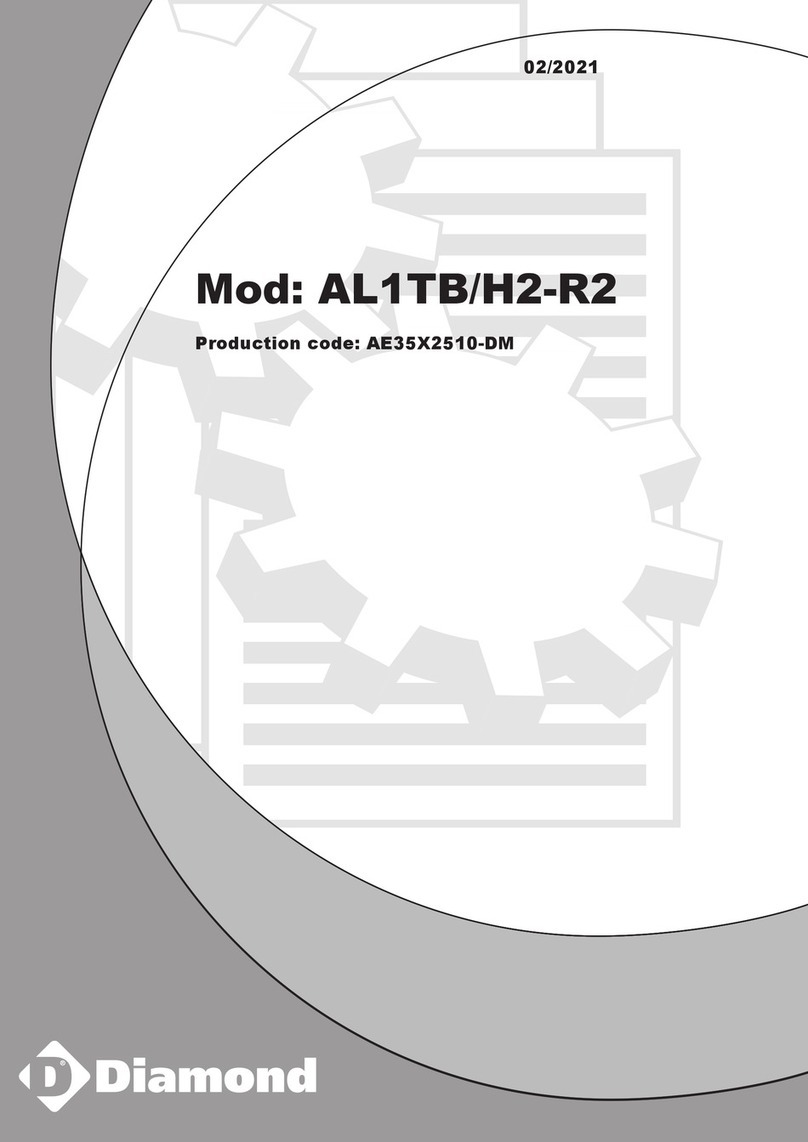
Diamond
Diamond AL1TB/H2-R2 Installation, Operating and Maintenance Instruction
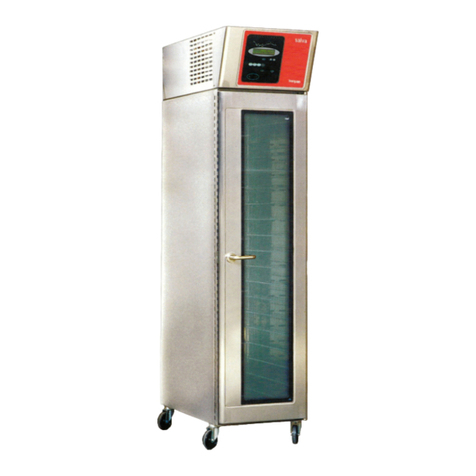
Salva
Salva IVERPAN FC-18 User instructions
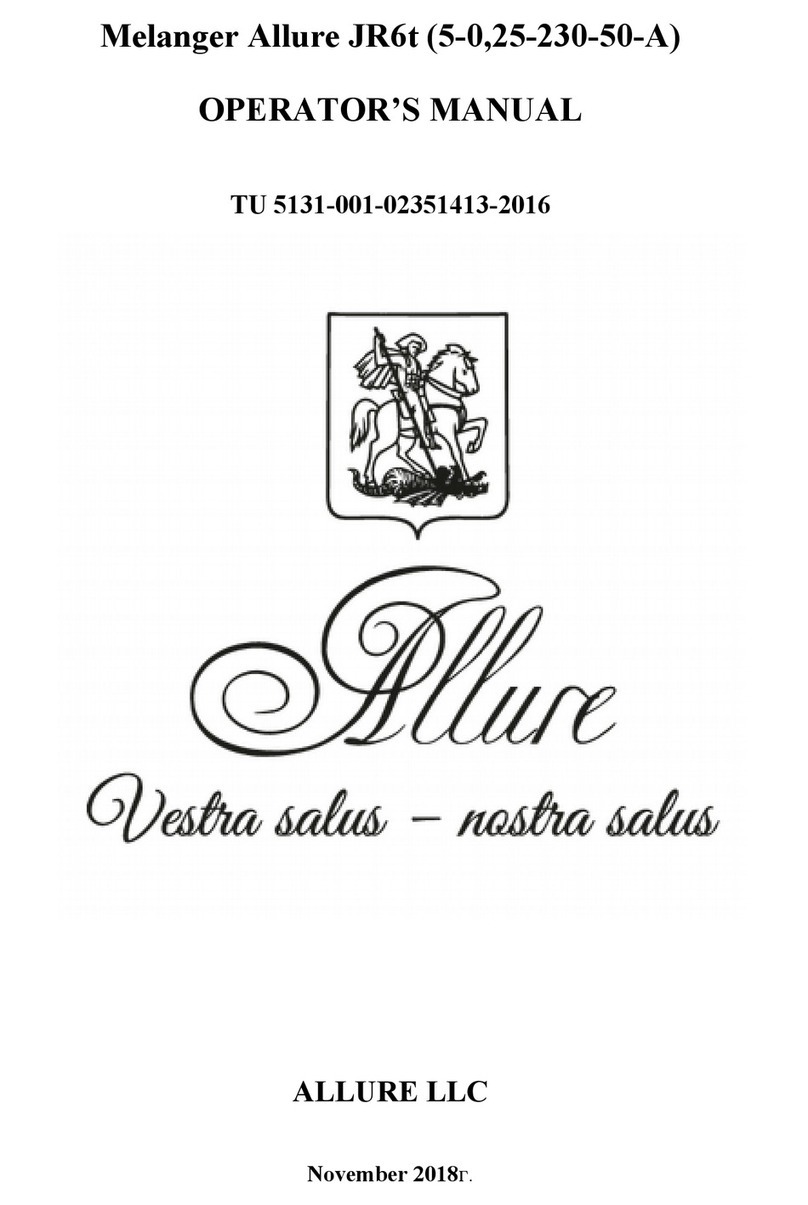
Allure
Allure Melanger JR6t Operator's manual
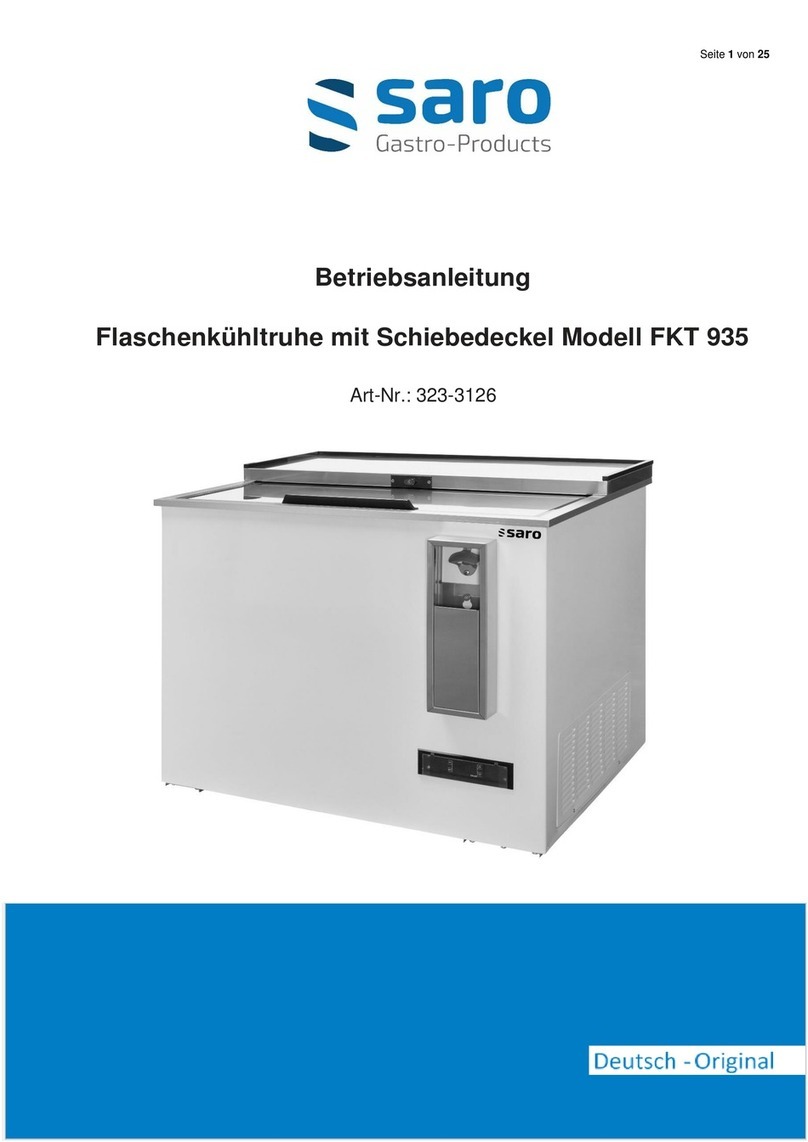
saro
saro FKT 935 operating instructions
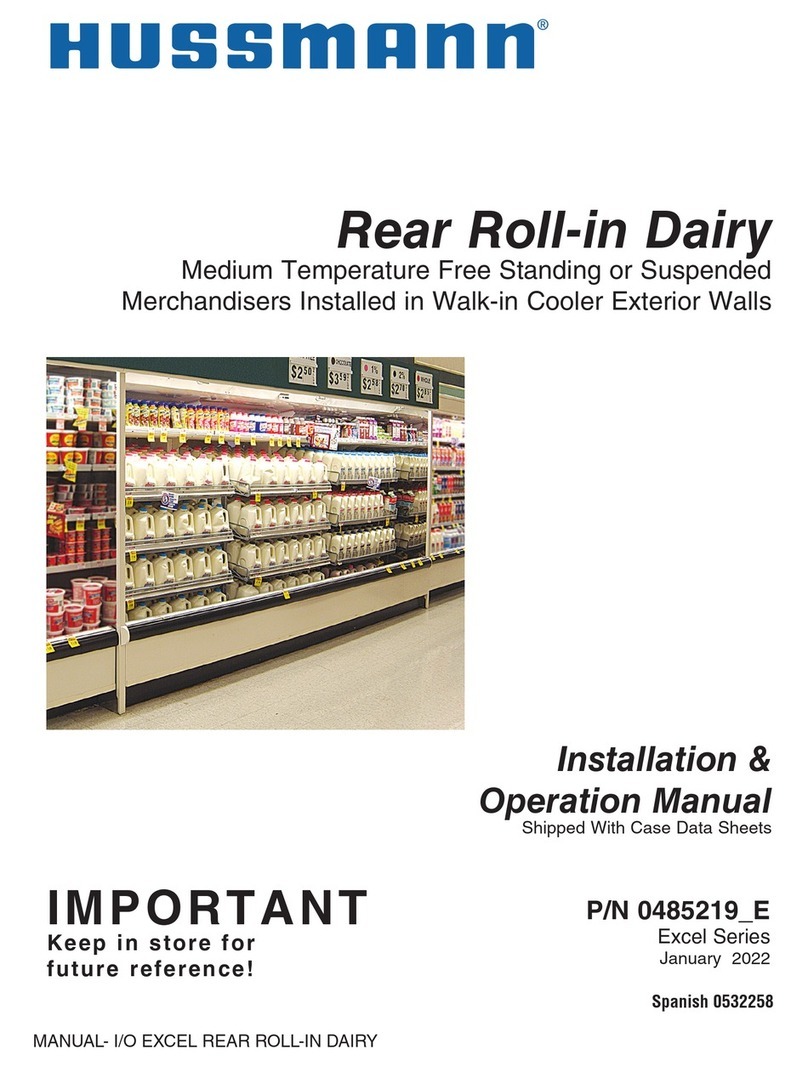
Hussmann
Hussmann Rear Roll-in Dairy Installation & operation manual
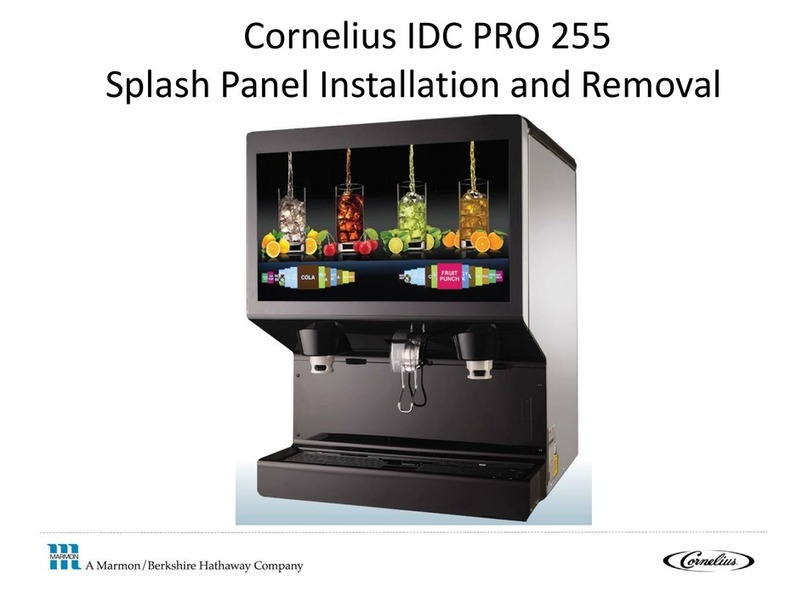
Cornelius
Cornelius IDC PRO 255 Service manual
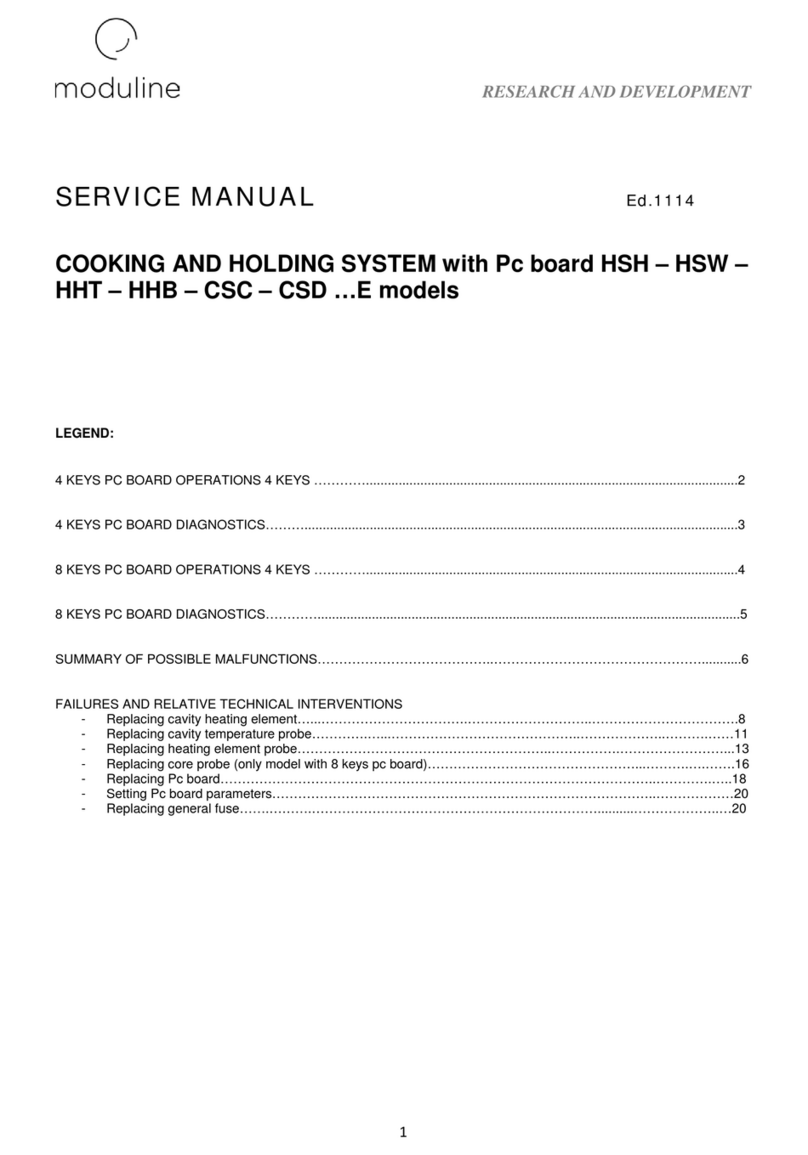
Moduline
Moduline HSH E Series Service manual
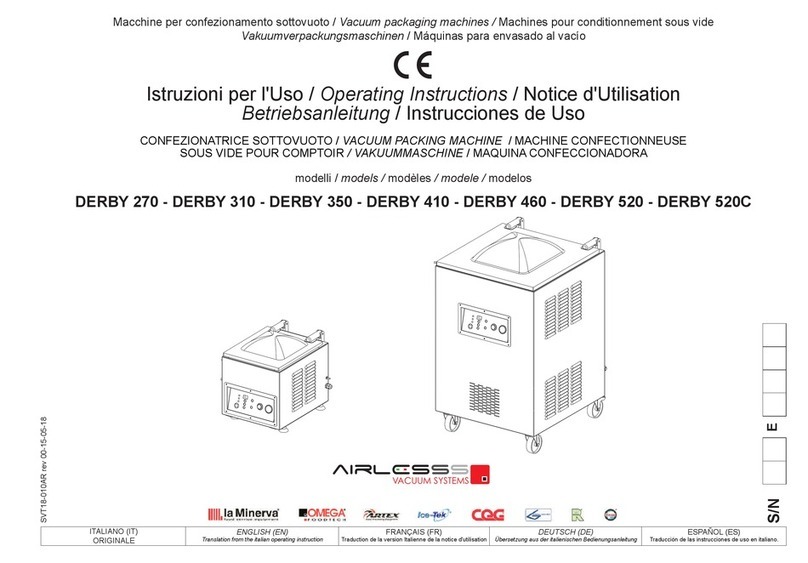
MINERVA OMEGA
MINERVA OMEGA DERBY 270 operating instructions
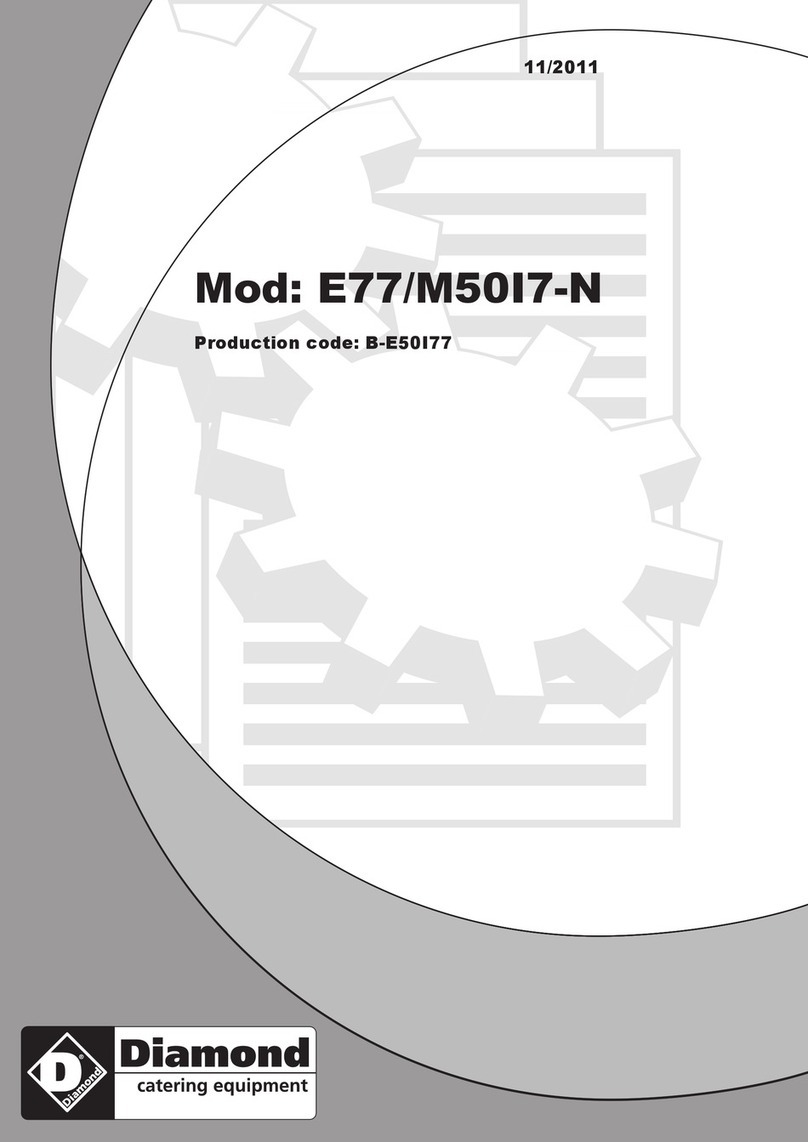
Diamond
Diamond OPTIMA 700 Installation, use and maintenance instructions
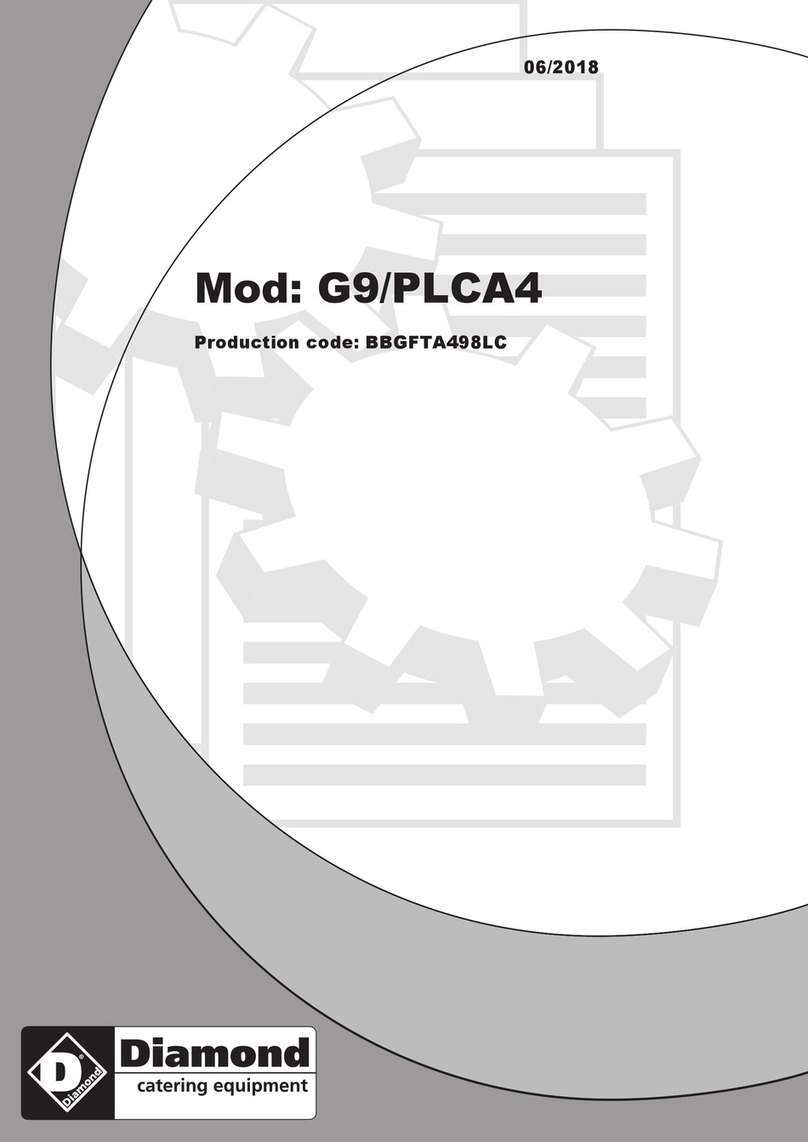
Diamond
Diamond G9/PLCA4 operating instructions
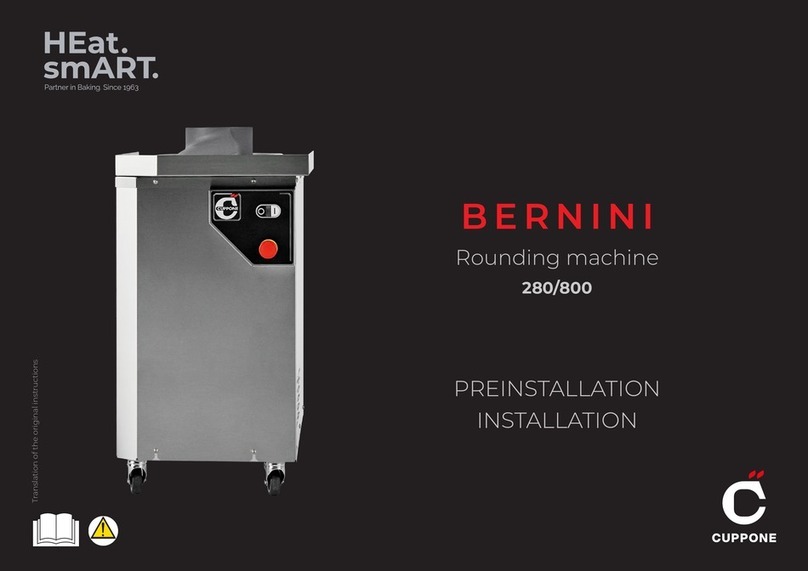
Cuppone
Cuppone BERNINI BRN 280 Installation

Arneg
Arneg Atlanta Direction for Installation and Use
